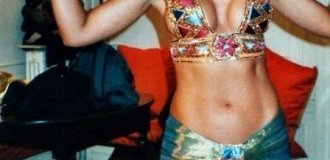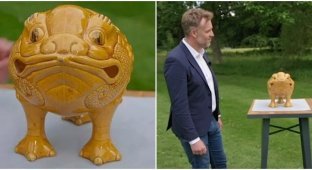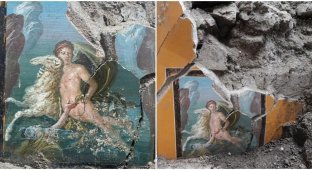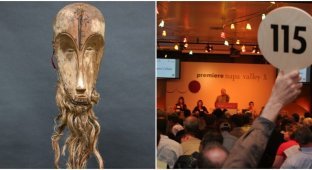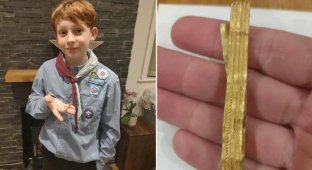Tiara of Saitaphernes and the consequences of a big scam (9 photos)
For much of the decade, the famous and respected Louvre Museum in Paris proudly displayed a supposedly ancient tiara made of solid gold. Louvre experts determined that it belonged to the Scythian king Saitaphernes, who ruled sometime in the 3rd century BC. An inscription on the diadem stating that it was a gift to King Saitaphernes from Olbia, a Greek colony on the Black Sea coast, left no doubt as to its authenticity and age. 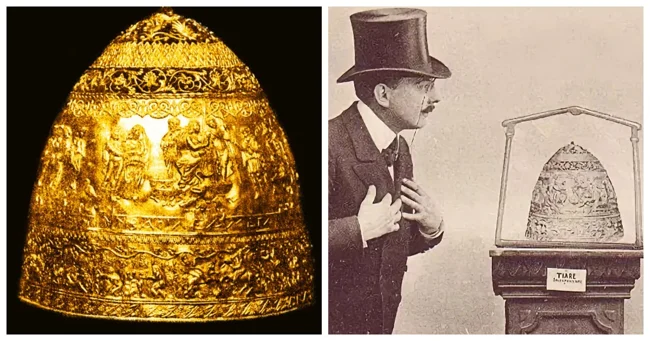
But later it turned out that the new owner of the tiara was a bit hasty in acquiring the item. Now the exhibit is stored in storage, which is very unpleasant, because it turned out that the diadem is a hoax staged by two enterprising antique dealers. 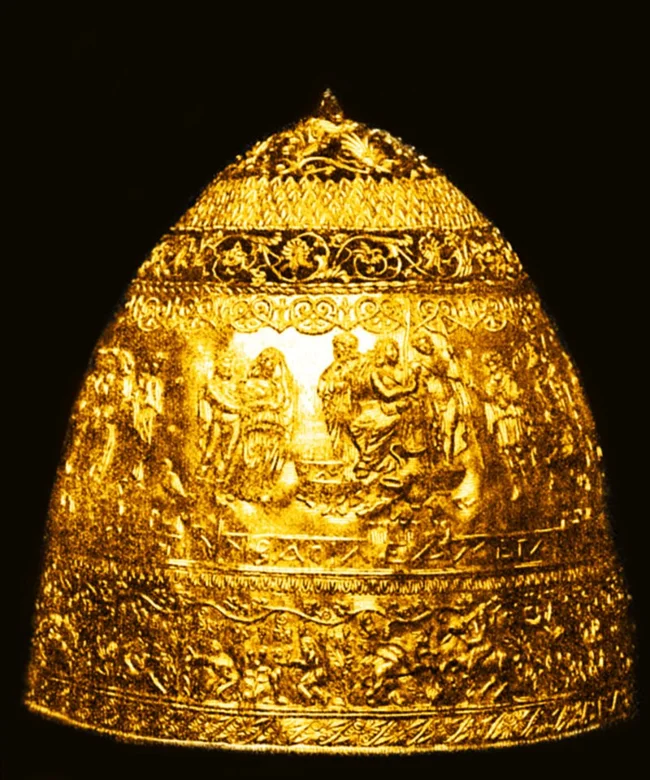
«Tiara of Saitaphernes». 1895, gold, embossed. 17.5 x 18 cm, Louvre, Paris
The story of the tiara began in 1894 in Odessa. Two art dealers, Shapschel Gokhman and his brother Leiba, approached an experienced jeweler, Israel Rukhomovsky, and convinced him to make a domed crown out of gold for their archaeologist friend. Rukhomovsky was unfamiliar with Greek mythology, so the men provided him with books of drawings of ancient finds and details of recent excavations to help him develop the design. 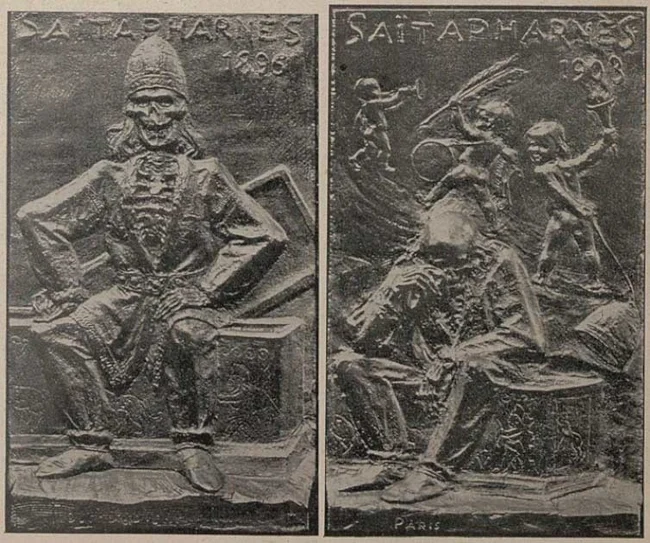
The finished product was 18 centimeters high and weighed about half a kilogram. The lower part of the diadem was decorated with scenes from everyday life, and the upper, wider strip depicted episodes from the Iliad, including the quarrel between Agamemnon and Achilles over Briseis. Around the diadem was an inscription that read: "The council and citizens of Olbia honor the great and invincible king Saitaphernes." The text was an allusion to an episode dating back to the late 3rd or early 2nd century BC. BC, when King Saitaphernes besieged the Greek colony of Olbia and was persuaded to leave the city alone only by offering expensive gifts. 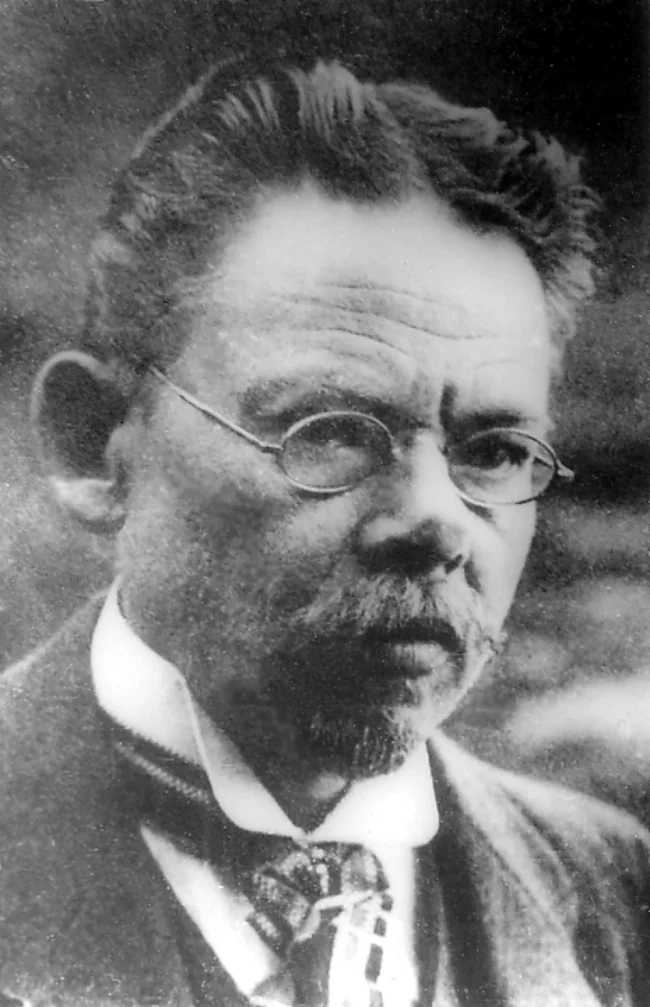
Israel Rukhomovsky
Rukhomovsky handed over the crown to the Gokhmans, took his commission, and thought nothing more of it.
A few months later, the Gokhman brothers traveled to Vienna to exhibit the "newly discovered" antiques that a group of Crimean peasants had allegedly found in a field. At the time, Greek and Scythian works of art were highly coveted by European museums. Among the finds was the diadem. 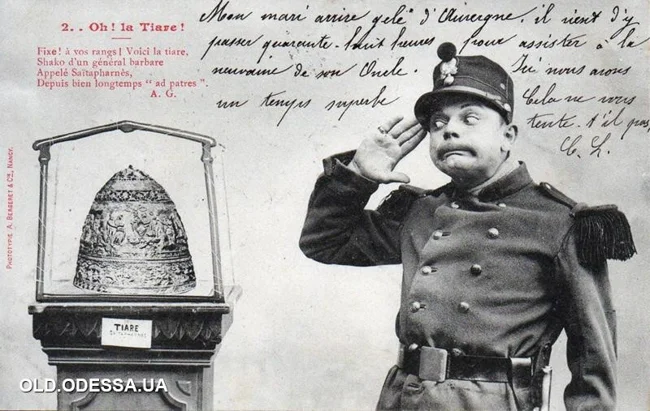
Satirical Postcard
The Imperial Court Museum in Vienna and the British Museum had some reserves, but both declined the tiara, and the Louvre jumped at the chance to buy it, paying 200,000 francs for it. Symbolically, the deal was finalized on April 1, 1896.
Soon after the Louvre acquired the tiara, questions arose about its provenance. German archaeologist Adolf Furtwängler noted many stylistic problems with the tiara's design and questioned the artifact's pristine condition. But the Louvre responded to the claims by accusing the archaeologist of having been "motivated by malice" - he was German and the museum was French. The Louvre and the Parisian press battled for six years. 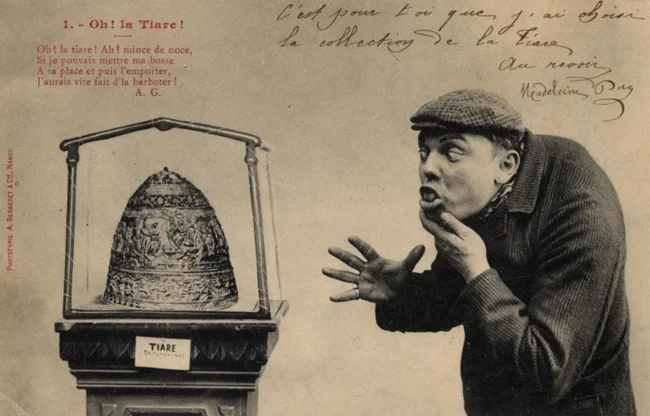
The news of the tiara eventually reached Rukhomovsky, who was warned of a possible fraud by his friend and associate Lifshitz, to whom Rukhomovsky briefly showed the piece. Lifshitz also wrote a letter to the editor of the French newspaper Le Matin, claiming to have witnessed the tiara being made by Israel Rukhomovsky. The letter was published in 1903.
Rukhomovsky was outraged at being duped. He went to Paris and showed up at the Louvre. There he explained how he had been tricked into making a fake crown. He even pointed to the exact books the Gokhmans had given him and described how he had made it out of three pieces and soldered them together. Still unconvinced, the museum officials gave Rukhomovsky some gold and asked him to do his best to demonstrate his skills. Only when the jeweler reproduced part of the crown did the museum realize they had bought a fake. 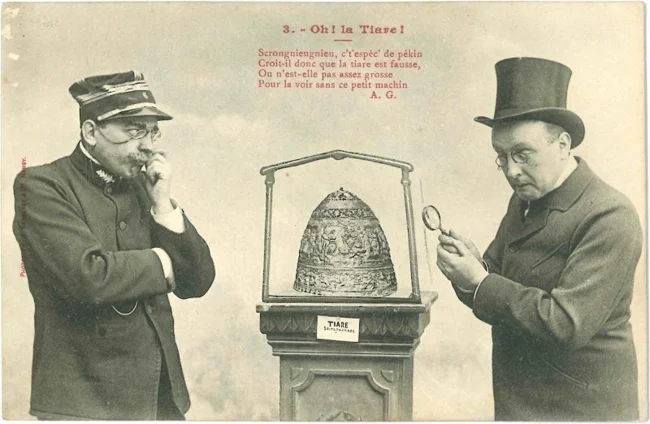
Later, in 1907, the newspaper World Today wrote a scathing article:
The diadem is heavily dented, and adds a comical note to the affair. It is assumed that they were caused by falling stones from a moldy tomb. These stones were undoubtedly of rare and discernible artistic value, since they did not hit any of the numerous relief figures, but dented most of the smooth places. Moreover, unless the worthy Scythian ruler had turned over several times in his tomb, it was impossible to explain why dents were found on all sides of his diadem. However, no miracle had occurred: the irregularities and dents were made by alternately using the ends of an ordinary hammer. 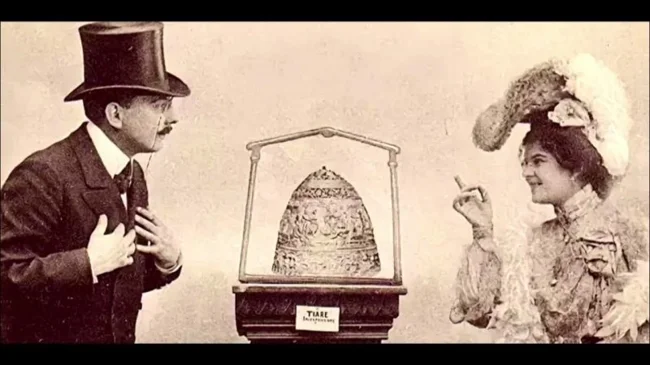
This story attracted considerable public attention. Traders sold postcards, souvenirs, and copies of the tiara. Caricatures were made about it and it was sung about in cabarets.
The Louvre still owns the tiara, although it is no longer on display. In 1954, the tiara was included in the "Salon of Counterfeits" at the Louvre along with eight Mona Lisas. The tiara was borrowed and exhibited several times by other museums. There are two copies of the tiara, one each in the British Museum and the Tel Aviv Museum of Art. 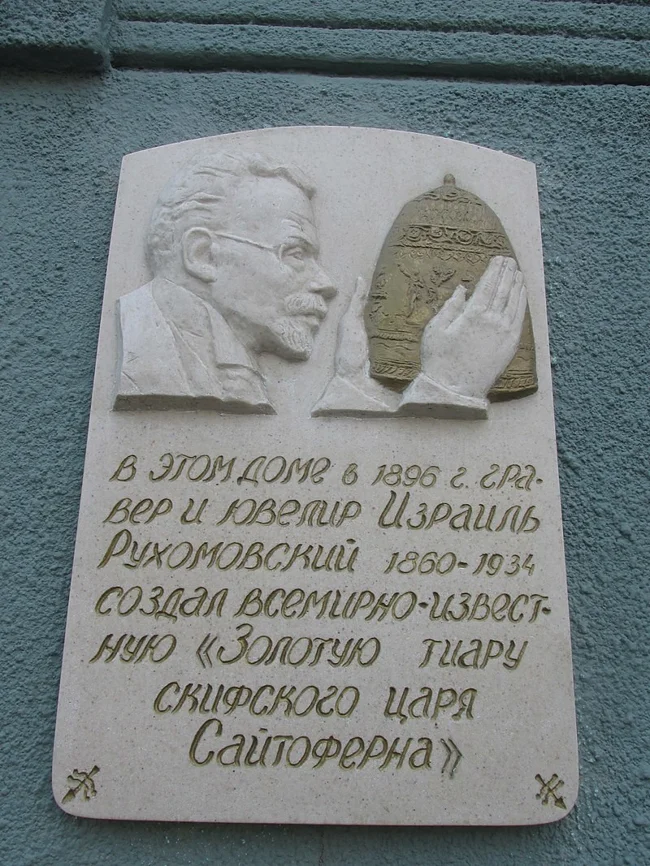
Memorial plaque to the jeweler Iz. Rukhomovsky in Odessa (Osipova St., 6)
The fiasco with the tiara made Rukhomovsky famous. The Odessa master was introduced to the richest Jewish banker and art collector in Paris, Baron Edmond Rothschild, who immediately ordered several items from him. Other works by the master were awarded the Gold Medal at the Paris Exhibition of Decorative Arts. In 2014, a memorial plaque was unveiled on the wall of Rukhomovsky's Odessa workshop, where the tiara was forged.









